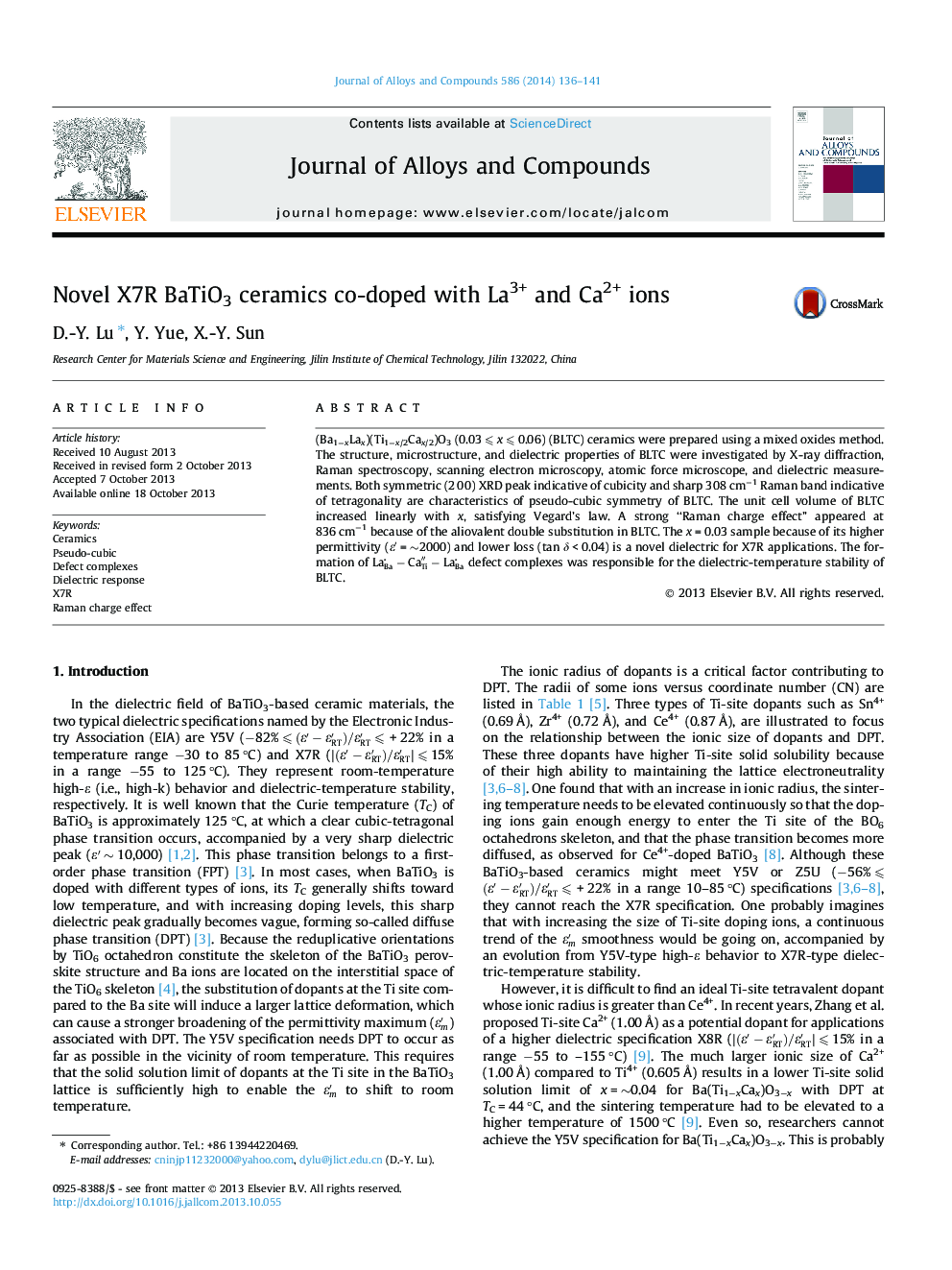| کد مقاله | کد نشریه | سال انتشار | مقاله انگلیسی | نسخه تمام متن |
|---|---|---|---|---|
| 1612626 | 1516307 | 2014 | 6 صفحه PDF | دانلود رایگان |

• Structural and dielectric properties of (Ba1−xLax)(Ti1−x/2Cax/2)O3 were studied.
• A pseudo-cubic ceramic with x = 0.03 is a novel dielectric for X7R applications.
• A symmetric (2 0 0) XRD peak and sharp Raman band are characteristics of pseudo-cubic.
• The unit cell volume (V0) of BLTC increases linearly with x, satisfying Vegard’s law.
• Formation of defect complexes with much larger Ti-site Ca2+ is responsible for X7R.
(Ba1−xLax)(Ti1−x/2Cax/2)O3 (0.03 ⩽ x ⩽ 0.06) (BLTC) ceramics were prepared using a mixed oxides method. The structure, microstructure, and dielectric properties of BLTC were investigated by X-ray diffraction, Raman spectroscopy, scanning electron microscopy, atomic force microscope, and dielectric measurements. Both symmetric (2 0 0) XRD peak indicative of cubicity and sharp 308 cm−1 Raman band indicative of tetragonality are characteristics of pseudo-cubic symmetry of BLTC. The unit cell volume of BLTC increased linearly with x, satisfying Vegard’s law. A strong “Raman charge effect” appeared at 836 cm−1 because of the aliovalent double substitution in BLTC. The x = 0.03 sample because of its higher permittivity (ε′ = ∼2000) and lower loss (tan δ < 0.04) is a novel dielectric for X7R applications. The formation of LaBa-CaTi″-LaBa defect complexes was responsible for the dielectric-temperature stability of BLTC.
Journal: Journal of Alloys and Compounds - Volume 586, 15 February 2014, Pages 136–141